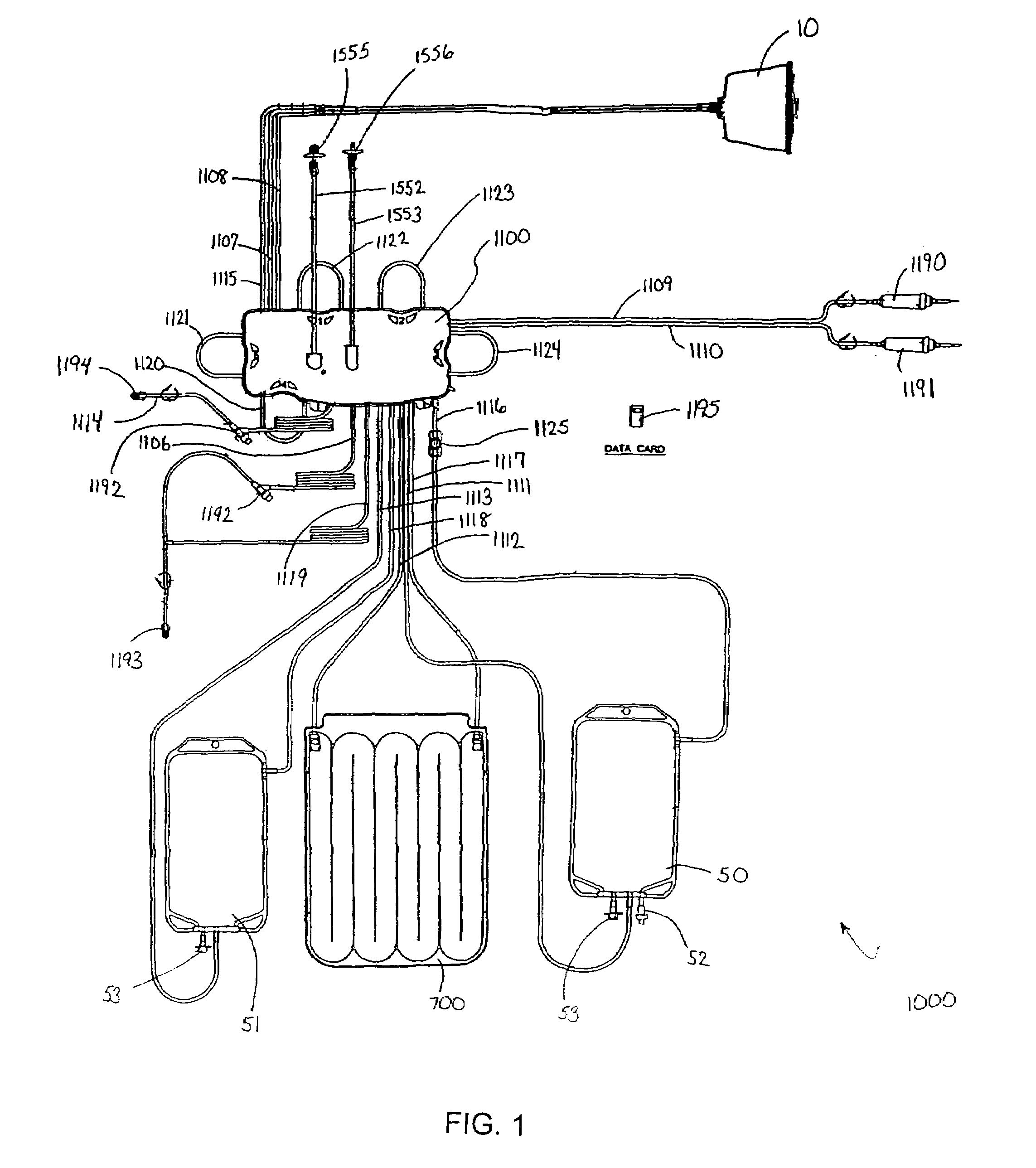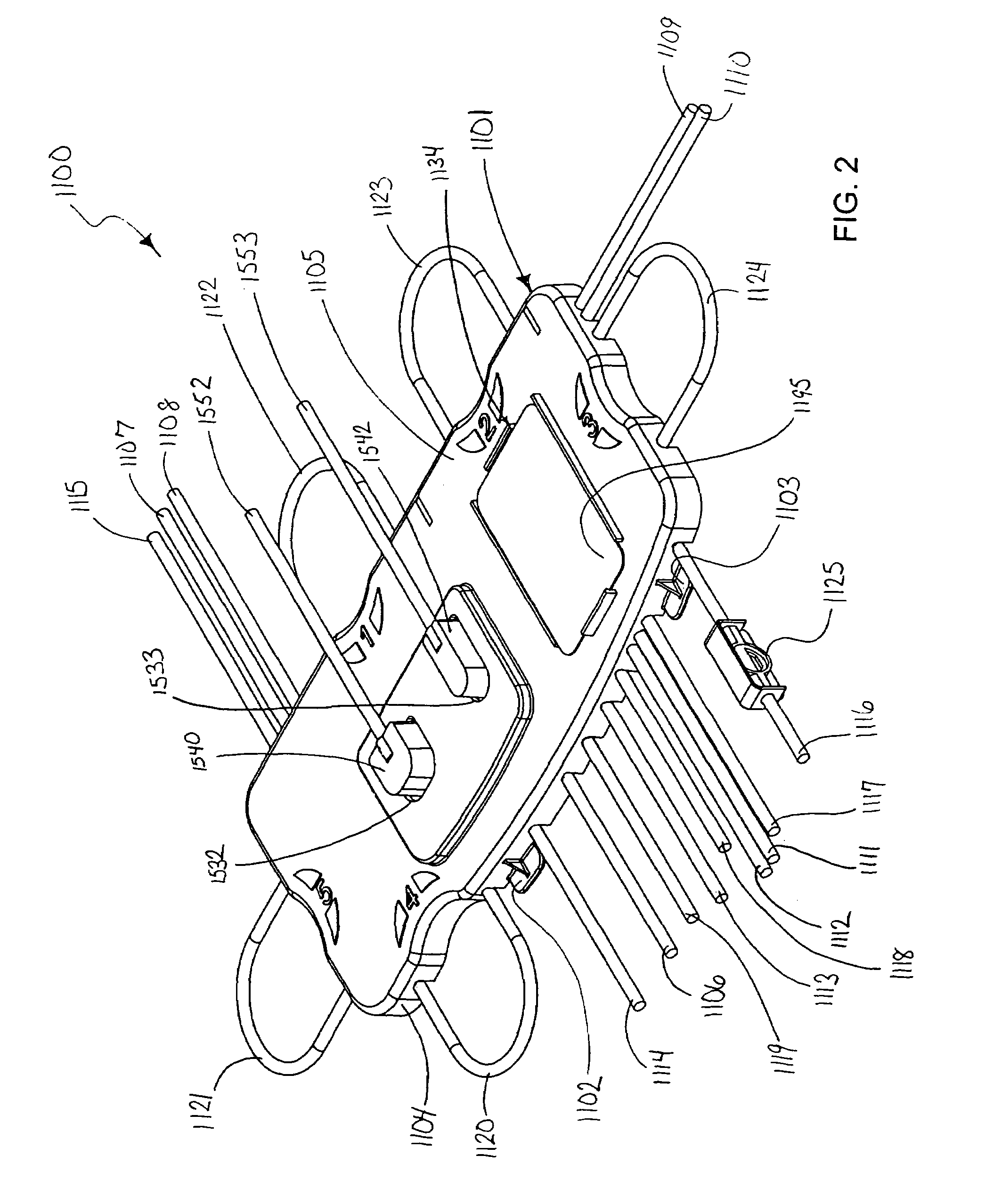Method for collecting a desired blood component and performing a photopheresis treatment
a blood component and photopheresis technology, applied in the direction of positive displacement liquid engine, prosthesis, centrifuge, etc., can solve the problems of affecting the treatment effect of patients, requiring several hours to treat patients or obtain a sufficient supply of separated blood fragments, and complex systems to manufactur
- Summary
- Abstract
- Description
- Claims
- Application Information
AI Technical Summary
Benefits of technology
Problems solved by technology
Method used
Image
Examples
Embodiment Construction
[0080]Features of the present invention are embodied in the permanent blood driving equipment, the disposable photopheresis kit, the various devices which make up the disposable kit, and the corresponding treatment process. The following written description is outlined as follows:
[0081]I. Disposable Photopheresis Kit[0082]A. Cassette for Controlling Fluid Flow[0083]1. Filter Assembly[0084]B. Irradiation Chamber[0085]C. Centrifuge Bowl[0086]1. Drive Tube
[0087]II. Permanent Tower System[0088]A. Photoactivation Chamber[0089]B. Centrifuge Chamber[0090]C. Fluid Flow Control Deck[0091]1. Cassette Clamping Mechanism[0092]2. Self-Loading Peristaltic Pumps[0093]D. Infra-Red Communication
[0094]III. Photopheresis Treatment Process
[0095]The above-outline is included to facilitate understanding of the features of the present invention. The outline is not limiting of the present invention and is not intended to categorize or limit any aspect of the invention. The inventions are described and illu...
PUM
| Property | Measurement | Unit |
|---|---|---|
| treatment time | aaaaa | aaaaa |
| pore size | aaaaa | aaaaa |
| wavelength | aaaaa | aaaaa |
Abstract
Description
Claims
Application Information
 Login to View More
Login to View More - R&D
- Intellectual Property
- Life Sciences
- Materials
- Tech Scout
- Unparalleled Data Quality
- Higher Quality Content
- 60% Fewer Hallucinations
Browse by: Latest US Patents, China's latest patents, Technical Efficacy Thesaurus, Application Domain, Technology Topic, Popular Technical Reports.
© 2025 PatSnap. All rights reserved.Legal|Privacy policy|Modern Slavery Act Transparency Statement|Sitemap|About US| Contact US: help@patsnap.com



